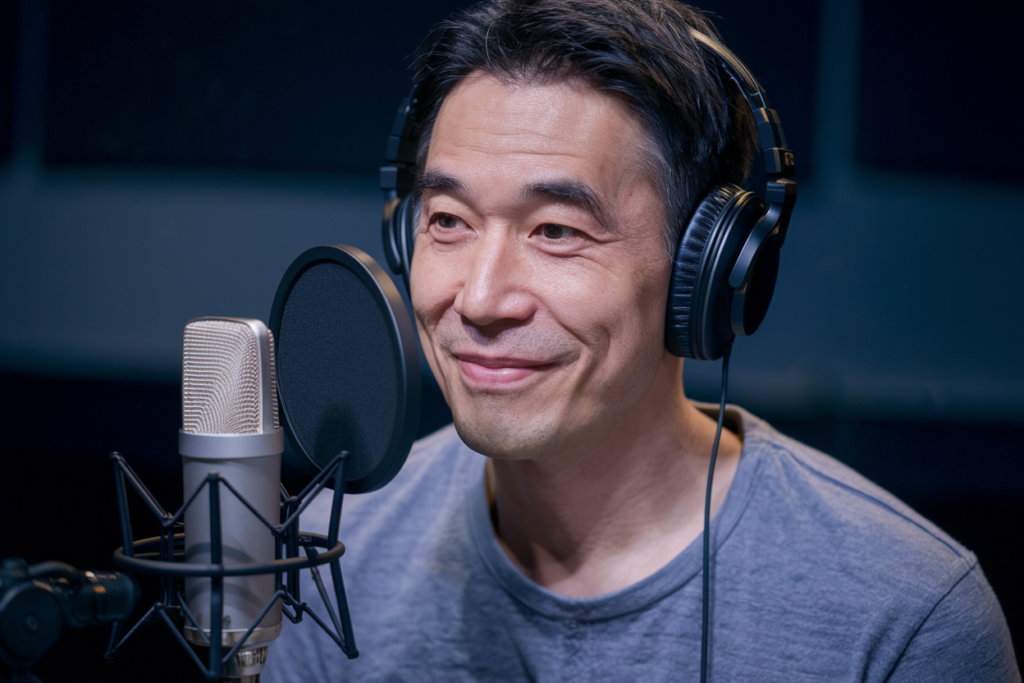Key Takeaways
- Regional Accents Matter: Understanding regional Japanese accents is crucial for voice work, enhancing character authenticity and relatability in anime and games.
- Diverse Dialects: Japan’s dialects, such as Kanto, Kansai, Hokkaido, and Kyushu, significantly influence pronunciation and emotional portrayal in character performances.
- Character Authenticity: Utilizing the correct accent adds credibility to characters by reflecting their cultural background and making them more relatable to audiences.
- Audience Connection: Familiar sounds from regional accents foster a deeper connection with viewers, enhancing their overall experience of the narrative.
- Skill Development: Voice actors must invest time in learning and adapting to various accents to elevate their craft and embrace unique character portrayals effectively.
- Challenges in Mastery: Overcoming perceptions and stereotypes surrounding regional accents is key for voice actors to deliver authentic performances without falling into clichés.
Ever wondered how regional Japanese accents shape the world of voice work? It’s a fascinating aspect that can make or break a character’s authenticity in anime, games, and more. With Japan’s rich tapestry of dialects, understanding these accents is crucial for voice actors and fans alike.
Understanding Regional Japanese Accents
Regional Japanese accents play a vital role in voice work, particularly in anime and games. Recognizing these accents enhances the authenticity of characters, making them relatable to audiences.
Overview of Japanese Dialects
Japan boasts numerous dialects that vary significantly across regions. These dialects influence pronunciation, intonation, and vocabulary. Some well-known examples include:
- Kanto: This accent is prevalent around Tokyo and is often considered standard.
- Kansai: Known for its distinct tones and expressions, the Kansai dialect includes famous areas like Osaka.
- Hokkaido: Offers unique pronunciations influenced by both native Ainu language and mainland speech patterns.
- Kyushu: Features strong regional characteristics with variations among its prefectures.
Each dialect carries cultural nuances that bring depth to character development. For voice actors, mastering these accents can elevate performances.
Importance in Voice Work
Understanding regional accents matters greatly in voice work for several reasons:
- Character Authenticity: Using the correct accent lends credibility to a character’s background.
- Audience Connection: Viewers relate more deeply when they hear familiar sounds or phrases from their region.
- Differentiation: Unique accents help distinguish characters within a story, enhancing their individuality.
Voice talent skilled in various regional accents opens up opportunities for diverse roles. As you seek to connect with your audience through storytelling, recognizing these subtleties will enhance your projects’ overall impact.
Common Regional Accents in Voice Work
Understanding common regional accents in voice work enhances the authenticity and appeal of characters. Different accents can evoke specific emotions or connections, making them vital for any voice actor’s repertoire. Here’s a closer look at some prominent Japanese accents.
Kanto Accent
The Kanto accent, primarily spoken around Tokyo, is often considered the standard Japanese dialect. It’s characterized by its clear pronunciation and relatively neutral intonation. Many voice artists favor this accent for mainstream media due to its familiarity with audiences. When portraying characters from urban settings, mastering the Kanto accent helps convey confidence and approachability.
Kansai Accent
The Kansai accent, found in cities like Osaka and Kyoto, offers a lively twist on standard Japanese speech. Known for its distinct intonation patterns and playful expressions, it brings warmth and humor to characters. Voice actors using a Kansai accent can create memorable personalities that resonate well with listeners. This accent works particularly well in comedic roles or when depicting strong local identities.
Hokkaido Accent
The Hokkaido accent incorporates unique phonetic features influenced by both mainland Japan and indigenous Ainu culture. It presents softer sounds compared to other accents, giving it a gentle quality that can be quite soothing in voiceovers. For character portrayals requiring calmness or depth, the Hokkaido accent serves as an excellent choice for voice talent aiming to connect emotionally with their audience.
By familiarizing yourself with these regional accents, you elevate your skill set as a voice actor or artist significantly. Each dialect adds nuance to storytelling while enriching character development—essential aspects of successful voice work.
Effects on Character Performance
Regional Japanese accents significantly affect character performance in voice work. These accents add layers of authenticity, allowing voice actors to create more relatable and engaging characters.
Authenticity in Voice Acting
Authenticity plays a crucial role in voice acting. When you incorporate regional accents, you breathe life into your characters. A Kanto accent might fit a protagonist from Tokyo, while a Kansai accent adds humor and warmth to side characters. This attention to detail helps audiences connect with the story on a deeper level. It’s not just about sounding good; it’s about embodying the essence of the character’s background and personality.
Impact on Audience Perception
Audience perception shifts dramatically based on how well accents are executed. A skilled voice artist who understands regional nuances can evoke specific emotions and reactions from listeners. For instance, a Hokkaido accent may convey calmness, making it perfect for soothing or introspective roles. Meanwhile, the lively Kansai inflection often elicits laughter and joy, enhancing comedic scenes. By mastering these elements, you ensure that your portrayal resonates with viewers, enriching their experience and connection to the narrative.
Embracing regional Japanese accents as part of your voice work elevates character performances significantly while strengthening audience engagement through authenticity and emotional impact.
Challenges for Voice Actors
Voice actors face various challenges when working with regional Japanese accents. Mastering these accents requires dedication and practice, as each dialect has distinct phonetic qualities and cultural nuances.
Learning and Adapting to Accents
Learning regional accents involves extensive listening and mimicking. You’ll need to immerse yourself in the specific dialect through films, shows, or native speakers. For instance, a voice actor may study the Kansai accent by watching local comedy performances known for their lively inflections. Practicing consistently helps develop your skills, but adapting takes time. Voice artists often find that even subtle variations in pitch and intonation can make a significant difference in authenticity.
Perceptions and Stereotypes
Perceptions surrounding regional accents add another layer of complexity for voice actors. Certain accents carry stereotypes that influence audience expectations. A Hokkaido accent might evoke feelings of calmness or reliability, while a strong Osaka accent could suggest humor or playfulness. Awareness of these perceptions allows you to navigate character portrayals more effectively; however, stereotypes can also box in creativity. Striking a balance between embracing an accent’s characteristics and avoiding clichés is essential for creating relatable characters that resonate with audiences.
Understanding these challenges equips you to enhance your craft as a voice actor, ensuring authentic performances that engage listeners while staying true to character backgrounds.
Conclusion
Mastering regional Japanese accents in voice work is crucial for creating authentic and engaging characters. When you embrace these dialects, you’re not just enhancing your performance but also connecting more deeply with your audience. The richness of each accent adds layers to storytelling that resonate well beyond the screen or stage.
As you navigate the challenges associated with these accents, remember that practice and immersion are key. By honing your skills and understanding the cultural nuances behind each dialect, you can elevate your craft significantly. This dedication will help ensure that every character you portray feels genuine and relatable, ultimately making a lasting impact on your listeners.
Frequently Asked Questions
What is the significance of regional Japanese accents in voice work?
Regional Japanese accents play a crucial role in voice work by adding authenticity to characters. They help convey a character’s background, personality, and cultural nuances. Understanding these dialects enhances the connection between the audience and characters, making performances more engaging.
How do different Japanese dialects affect character authenticity?
Different Japanese dialects, like Kanto or Kansai, contribute unique characteristics that enrich storytelling. Each accent can evoke specific emotions and reactions from the audience, allowing voice actors to create relatable and distinct characters within their narratives.
What challenges do voice actors face when mastering regional accents?
Voice actors often struggle with the distinct phonetic qualities of various regional accents. Mastering these requires dedication through extensive practice, listening, and immersion in films or interactions with native speakers to accurately capture each accent’s essence.
How can mastering regional accents improve voice performances?
Mastering regional accents allows voice actors to add depth to their performances. It creates layers of authenticity that make characters more relatable and engaging while enhancing emotional impact during key scenes in anime or games.
Do stereotypes around regional accents influence character portrayals?
Yes, stereotypes associated with certain regional accents can shape audience expectations and character representations. While they may aid relatability, relying too heavily on clichés can limit creativity; thus, balance is essential for authentic portrayals without reinforcing negative stereotypes.







